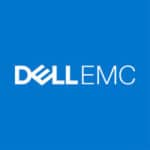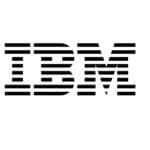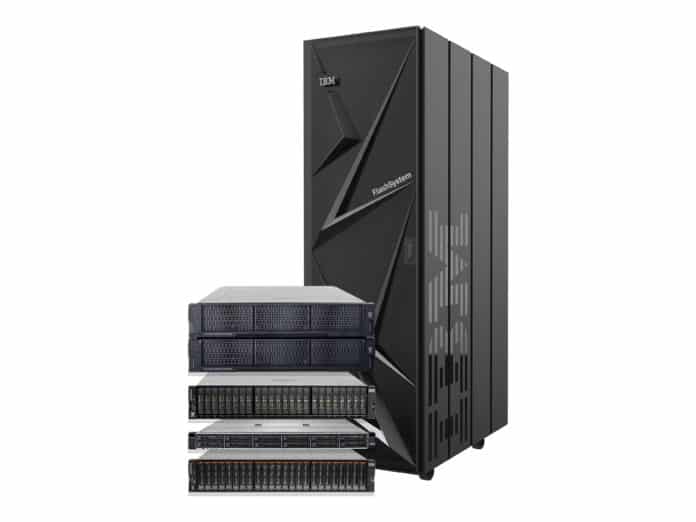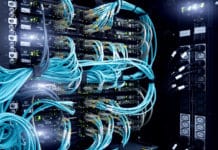All-flash arrays are storage systems that use only flash-based storage, like solid-state drives, rather than mechanical hard drives. They play a critical role in storage infrastructures because they have sufficient data access speeds to support businesses’ most critical applications. Storage arrays entirely made of flash drives haven’t always been affordable for businesses; for years, hard drives or hybrid arrays were the best option. But all-flash arrays have become more available and more cost-effective, and they provide the support that data-intensive workloads need to keep business operations running optimally.
We compared all-flash arrays based on features and price—here are our six top picks:
- Pure Storage FlashArray//X X90: Best for technologically advanced data centers
- Pure Storage FlashArray//C C90: Best for backup
- NetApp AFA A900: Best for security
- Dell EMC Unity XT 880F: Best for big data
- IBM FlashSystem 7300: Best for storage optimization
- Dell EMC PowerMax NVMe 8500: Best for speed
Read on to learn more about how they compare and what you need to know about them.
Top All-Flash Array Storage Solutions Compared
All-flash arrays for enterprises support data-intensive workloads in organizations’ storage infrastructures. The following table gives an overview of our top all-flash array selections, their pricing transparency, and a few of their features.
| Thin provisioning | Live chat for customer support | NVMe-oF support | Transparent pricing | |
| Pure Storage FlashArray//X X90 | ✅ | 🟥 | ✅ | 🟥 |
| Pure Storage FlashArray//C C90 | ✅ | 🟥 | ✅ | 🟥 |
| NetApp AFA A900 | ✅ | ✅ | 🟨 | 🟨 |
| Dell EMC Unity XT 880F | ✅ | ✅ | 🟥 | 🟥 |
| IBM FlashSystem 7300 | ✅ | 🟥 | ✅ | ✅ |
| Dell EMC PowerMax NVMe 8500 | ✅ | 🟥 | ✅ | 🟥 |
✅= offered by vendor 🟨= unknown or unclear 🟥= not offered by vendor
Jump to:
Key Features of All-Flash Arrays
How to Choose an All-Flash Array
Frequently Asked Questions (FAQs)
How We Evaluated the Best All-Flash Arrays
Bottom Line: Implementing All-Flash Arrays in Your Storage Infrastructure
Pure Storage FlashArray//X X90
Best for technologically advanced data centers

Pricing
For pricing guidance, potential buyers must contact Pure Storage to request a quote. Contact Pure to request a demo or learn more about FlashArray//X.
Key Features
- Data portability between cloud and on-premises environments and between physical and virtual machines
- ActiveCluster and ActiveDR for replication and data protection
- Immutable snapshots of data that help protect it from ransomware
Pros
- Uses non-volatile memory express over fabrics (NVMe-oF) technology for storage networking
- Designated Support Engineer available for existing Premium maintenance support plans
Cons
- Lower usable capacity compared to others on this list
- Lacks transparent pricing
PureStorage FlashArray//C C90
Best for backup

Pricing
Pure Storage doesn’t offer pricing guidance for FlashArray//C before potential buyers request a quote. Contact Pure to request a demo or learn more about FlashArray//C.
Key Features
- Support for both SAN and NAS applications through Purity, which unifies the two in one environment
- Consistent encryption
- Replication between remote locations and failover
Pros
- Designed for medium-class workloads rather than mission-critical applications
- Supports NVMe over fabrics
- Designated Support Engineer available for existing Premium maintenance support plans
Cons
- Not ideal for applications that require top speeds
- Lacks transparent pricing
NetApp AFA A900
Best for security

Pricing
NetApp provides some data in this pricing guide, such as controller upgrade and base module costs, but you’ll need to contact NetApp’s sales team for a customized quote.
Key Features
- Integrations with remote backup software
- Support for NAS
- Predictive analytics through NetApp’s Active IQ® Digital Advisor
Pros
- Plenty of security capabilities, including immutable replicated copies and MFA
- Data migration from third-party storage arrays
Cons
- Pricing information is difficult to calculate
Dell EMC Unity XT 880F
Best for big data

Pricing
Dell requires potential buyers to fill out a form and provide their preferred timeline to receive a quote.
Key Features
- Encryption and antivirus integration
- Storage analytics
- Block migration from third-party arrays
- Management software that includes thin provisioning and CloudIQ software for cloud-based storage analytics
Pros
- Supports bulk storage with 16 PB total raw space
- Offers multiple protective features for security-focused storage teams
Cons
- Unclear whether the Unity XT 880F supports NVMe, which could cause slowdowns in contrast to comparable arrays
- Lacks transparent pricing
IBM FlashSystem 7300
Best for storage optimization

Pricing
Sample pricing for one unit of FlashSystem 7300 starts at $112,000. For a number specific to your organization’s needs, request a custom quote from IBM.
Key Features
- Automated storage tiering
- Remote mirroring for disaster recovery
- Storage analytics
Pros
- Technical account manager available for additional customer support
- Focus on storage optimization
- Transparent pricing
Cons
- Lower usable capacity compared to others on this list
Dell EMC PowerMax NVMe 8500
Best for speed

Pricing
Dell doesn’t provide pricing for the PowerMax 8500 without requesting a quote. To receive specific pricing, fill out their quote form, which includes purchase timeframe.
Key features
- Digital signature required for firmware updates
- Multi-factor authentication through PowerMax integration with RSA SecurID
- Remote replication and remote RAID
- Monitoring and predictive analytics through CloudIQ
Pros
- Up to 18 PB of effective storage (note that Dell doesn’t provide a raw estimate, and that number will be smaller)
- NVMe
- Multiple security capabilities
Cons
- Lacks transparent pricing
Key Features of All-Flash Arrays
All-flash arrays play an important role in storage infrastructures because they manage large volumes of data while also improving applications’ ability to access data. While some flash arrays have plenty of additional features, you should specifically look for the following capabilities when shopping for your team’s next array.
Backup and disaster recovery capabilities
Features like replication and snapshots help protect data if copies are lost, one storage site goes down, or a cyberattack wipes out the existing dataset. Backup and disaster recovery practices are critical for storage teams to implement, and high-quality storage arrays provide valuable features for protecting business data.
Support for multiple protocols
The more network and drive protocols an array supports, the more networks and drives it will be compatible with. Flexibility and interoperability make storage arrays more useful because they’re more likely to support storage teams’ existing hardware and network infrastructure.
Security features
The number of security capabilities that a storage array has will vary, but look for tools like encryption or multi-factor authentication. Data is one of your business’s most valuable commodities, and storage arrays—while not dedicated security platforms—have some responsibility for protecting it.
Data portability
This will also vary, but ideally arrays should support some form of data portability. It’s important that your storage team be able to move data between environments, whether those are cloud, virtual, or on-premises.
How to Choose an All-Flash Array
Buying an array is an intensive process, and you must consider not only cost but also features and team experience. Use the following steps to find a good all-flash array vendor and product for your business.
Pick your must-have features
There are some capabilities your team will prioritize over others. Make a short list of features you’d really like a storage array to have. Maybe it’s additional security, not just encryption, or maybe your team really wants good predictive analytics. Prioritize solutions that have those three to five features.
Determine best fit for budget
This may be one of the most difficult steps of buying an array. Most of the top all-flash array vendors don’t provide pricing unless upon request, so you’ll need to set aside time to contact their sales teams. To get an accurate estimate, you’ll need to know your storage requirements quite well, so ensure that you can clearly present your storage team’s exact needs.
Choose what makes sense for your team
A smaller, less experienced storage team may need an array with a simpler configuration or limited customization. Likewise, a storage team with plenty of combined experience may want a more advanced solution.
Frequently Asked Questions (FAQs)
Want to learn more about all-flash storage? Here are some additional facts about all-flash arrays and their role in the storage industry.
What’s the difference between all-flash arrays and hybrid arrays?
Hybrid arrays include both flash drives and hard drives. They’re often a good choice for storage teams that need speed but want to save costs, since hybrid arrays tend to be less expensive than all-flash arrays.
All-flash arrays made a splash in the storage industry because they showed that flash—initially a very expensive technology—could entirely make up a storage array. While flash is still more expensive than spinning disk technology overall, it’s become much more affordable, especially for large enterprises that can invest in all-flash arrays to support their biggest workloads. That doesn’t mean a hybrid array is always a bad choice—just determine what your applications really need first.
What is an all-flash data center?
An all-flash data center is powered entirely by flash-based drives—no spinning disk or tape. One key advantage of all-flash data centers is reduced energy consumption: making that transition in multiple organizations’ facilities could significantly improve overall data center sustainability over time. However, for many businesses, all-flash data centers are cost-prohibitive. Additionally, it takes time to phase out other storage technologies, like disk and tape.
What is the difference between FlashBlade and FlashArray?
Pure Storage offers multiple all-flash storage solutions, including FlashBlade. FlashBlade is designed for file and object storage, while FlashArray is a block and file storage solution. FlashBlade is better suited to support large volumes of unstructured data.
How We Evaluated the Best All-Flash Arrays
To evaluate all-flash storage solutions, we compiled data on capacity, feature availability, pricing, protocols, and customer support. Then we analyzed the products using a weighted scoring rubric. Our scoring system ranks products from 0 to 5, and the best solutions are chosen from that short list. Enterprise Storage Forum does not rank recommended solutions based on any vendor partnerships, only on features and capabilities. We may also analyze comprehensive user reviews and the vendors’ own data on their products to determine whether we think that product is a good fit for our audience.
In our product scoring rubric, the following criteria are weighted according to the percentages listed for each. That weight affects the total score for each product accordingly.
Capacity | 20 percent
We examined both effective capacity and raw capacity and scored arrays based on the number of terabytes or PB they store (and penalized them when they didn’t provide a number).
Core features | 40 percent
We scored arrays based on the number of features they offered, including compression, deduplication, encryption, and disaster recovery capabilities.
Customer support | 10 percent
We scored arrays based on their customer service options, including phone, email, chat, and the option to have a technical account manager for their storage environment.
Protocol support | 20 percent
We scored arrays according to the number of protocols they support, including NVMe, Ethernet, and Fibre Channel.
Pricing availability | 10 percent
Rather than scoring based on price, we scored arrays on the availability of pricing information—whether the vendor was transparent about the array’s pricing or not.
Bottom Line: Implementing All-Flash Arrays in Your Storage Infrastructure
All-flash arrays support large volumes of data, allowing businesses to centrally manage their storage. Arrays also protect data through backup and recovery features, encryption, and access controls. Make sure you know your business’s needs, as well as your storage team’s, when considering a particular flash array. Rapid access speeds aren’t the only benefit of these arrays—when chosen and implemented successfully, they’re a long-term asset for not only your storage team but your entire organization.
If you want more options that aren’t just flash, read our list of the best storage and disk arrays next.






